Editor’s Key Takeaways: Master Photography: Learn from the Legends

Discover the 30 most famous photographers of all time and crucial photography lessons from each of them to enhance your own skills:
- Annie Leibovitz: Renowned for her intimate and emotional celebrity portraits. Key lesson: Use storytelling and personal connections in portrait photography.
- Ansel Adams: A master of landscape photography, particularly of the American West. Key lesson: Focus on environmental subjects and meticulous composition.
- Henri Cartier-Bresson: Pioneer of street photography and the concept of the “decisive moment.” Key lesson: Always be ready to capture spontaneous moments.
- Dorothea Lange: Famous for her impactful documentary photography during the Great Depression. Key lesson: Use photography to tell powerful stories and invoke empathy.
- Richard Avedon: Known for his high-fashion and minimalist portraits. Key lesson: Simplify setups and focus on the subject’s personality.
- Robert Capa: Iconic war photographer. Key lesson: Get close to the action for more engaging and emotive shots.
- Steve McCurry: Captured the famous “Afghan Girl” cover for National Geographic. Key lesson: Seek stunning, soulful portraits and vibrant colors.
- Irving Penn: Celebrated for fashion photography and portraits. Key lesson: Explore the interplay between simplicity and sophistication.
- Cindy Sherman: Known for her conceptual portraits where she plays different characters. Key lesson: Use self-portraits to explore identity and society.
- Walker Evans: Famous for documenting the Great Depression. Key lesson: Capturing the essence of everyday life adds depth to your work.
- And many more influential photographers such as Helmut Newton, Vivian Maier, and Mario Testino, each offering unique insights and techniques to inspire your photography journey.
Dive into the full article for more detailed lessons from these legendary photographers!
Introduction
We’ve compiled a list of the 30 most well-known photographers. And we’ve included some key lessons to learn from these photographers – which you can use to take stunning photos of your own!
1. Annie Leibovitz

Annie Leibovitz is an incredible American portrait photographer known for her strikingly intimate and emotional celebrity portraits. Her career began as a photographer for Rolling Stone magazine, where she developed a unique style that would redefine celebrity photography. Notable works include her iconic portrait of John Lennon on the day he was murdered, showcasing her ability to capture profound moments.
What can we learn from Annie Leibovitz?
Leibovitz is a master of storytelling. She infuses her subjects with mood and emotion, making each portrait resonate on a personal level. Her setups are often simple yet filled with intense emotion and intrigue.
So remember:
Tell a story with your portraits. The more personal connection you can create in your photo, the more impactful it will be.
Annie Leibovitz currently teaches a Masterclass on photography, where she shares insights into her creative process and techniques.
2. Ansel Adams
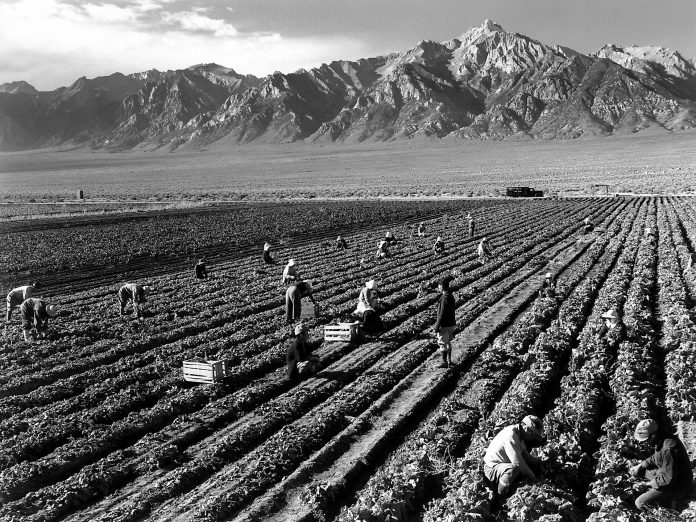
Ansel Adams was a pioneering American landscape photographer, celebrated for his stunning black-and-white images of the American West. A dedicated environmentalist, he worked closely with the Sierra Club and the U.S. National Parks system, advocating for the preservation of natural landscapes.
What can we learn from Ansel Adams?
Adams taught us that beauty lies in the details. His images often require multiple viewings to fully appreciate the depth and gravity he creates through careful composition and exposure techniques.
So try to think about every aspect of your photos. Ensure that even the smallest elements contribute to the overall masterpiece.
3. Henri Cartier-Bresson
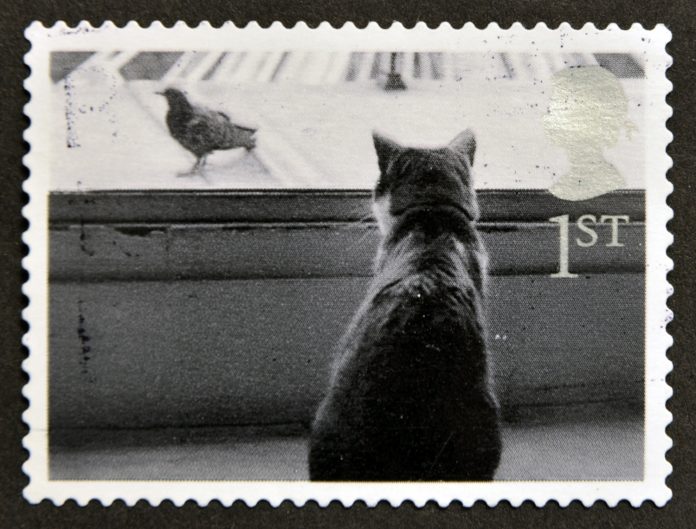
Henri Cartier-Bresson, a French photographer, is widely regarded as the master of candid photography and was one of the early users of 35mm film. His captivating images laid the groundwork for street photography as a genre.
What can we learn from Cartier-Bresson?
His work emphasizes the importance of appreciating the human condition. Capturing the essence of humanity and societal experiences is key to creating art that resonates across generations.
So don’t get too bogged down in creating the perfect setup. Instead, seek out the magic in everyday moments and be ready to capture them.
4. Dorothea Lange

Dorothea Lange was an American documentary photographer and photojournalist. She is most well-known for her evocative imagery during the Great Depression, which played a significant role in shaping documentary photography.
What can we learn from Dorothea Lange?
Lange’s work demonstrates the power of photography in recounting historical events. Her images provide a visual narrative of a time and place, invoking empathy and understanding.
With Lange’s imagery, we can visualize and comprehend events that have shaped our history.
5. Richard Avedon
Richard Avedon was an American fashion and portrait photographer who pioneered new forms of photography while working with magazines like Harper’s Bazaar, Life, and Vogue. His work revolutionized fashion photography with its emotional and introspective qualities.
What can we learn from Richard Avedon?
Avedon shows us that we can express profound ideas about our subjects through simplicity. His portraits often focus on capturing the essence of the individual with minimal distractions.
In photography, simplicity is often the most effective approach!
6. Robert Capa
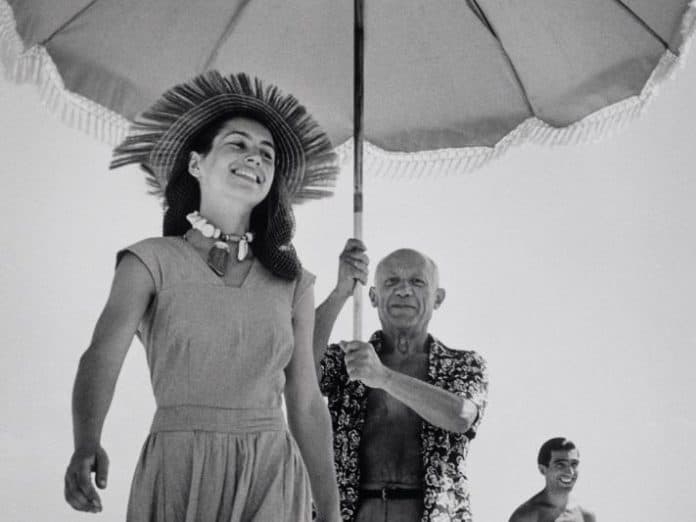
Robert Capa was a Hungarian war photographer and journalist, known for documenting significant historical events such as:
- Omaha Beach on D-Day
- World War II in London, North Africa, and Italy
- The liberation of Paris.
What can we learn from Robert Capa?
Capa taught us the value of capturing the personality of a subject. Through his wartime photography, he portrayed the strength and resilience of individuals amidst chaos.
Even during tumultuous times, the human spirit shines through. As photographers, we should strive to capture the essence of our subjects, regardless of the circumstances.
7. Steve McCurry

Steve McCurry is an American photographer and photojournalist, best known for his iconic photograph of the “Afghan Girl,” which graced the cover of National Geographic. His work often focuses on capturing the human experience in diverse cultural settings.
What can we learn from Steve McCurry?
McCurry’s work emphasizes the power of color to enhance the main subject. His vibrant images, often filled with rich textures, draw viewers in and create a strong emotional connection.
8. Irving Penn

Irving Penn was an American photographer known for his groundbreaking work in fashion, portrait, and still-life photography. He frequently collaborated with Vogue and captured striking images that merged art with commercialism.
What can we learn from Irving Penn?
Penn’s work teaches us the importance of expression and the ability to tell a story through imagery. His portraits often highlight the unique personality of the subject while maintaining a sense of simplicity.
Penn understood that simplicity and an emphasis on storytelling are vital components of impactful photography.
9. Cindy Sherman

Cindy Sherman is an American photographer renowned for her self-portraits that explore themes of identity and representation. Her series “Complete Untitled Film Stills” critiques the portrayal of women in media and popular culture.
What can we learn from Cindy Sherman?
Sherman teaches us that our best inspiration can often come from within ourselves. By using self-portraits to convey critiques of gender and identity, she effectively utilizes her persona to drive the meaning of her work.
So don’t worry if you can’t find a portrait subject; your own identity can be a powerful subject for exploration.
10. Walker Evans
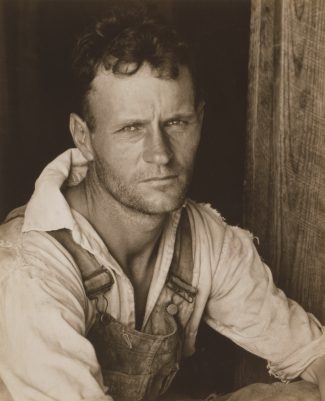
Walker Evans was a photographer and photojournalist known for his poignant documentation of the Great Depression. His large-format images captured the essence of American life, revealing the struggles and stories of ordinary people.
What can we learn from Walker Evans?
Evans exemplifies the power of capturing change and the human experience. His images reflect distinctive characters and the broader American society during a tumultuous era.
Documentary photographers should strive to capture the richness and complexity of life as it unfolds.
11. Helmut Newton

Helmut Newton was a German-Australian fashion photographer known for his provocative and erotic imagery. His bold style redefined beauty standards in fashion photography and challenged societal norms.
What can we learn from Helmut Newton?
Newton emphasizes the importance of pushing boundaries in photography, but it must be done with intention and a focus on evoking emotion. Controversial images can create dialogue and inspire change.
12. Vivian Maier

Vivian Maier was an American street photographer whose work gained acclaim posthumously. She captured the essence of urban life in cities like Chicago, New York City, and Los Angeles, revealing the beauty and complexity of everyday moments.
What can we learn from Vivian Maier?
Maier’s ability to connect with her subjects, often strangers, allows us to feel a deep emotional resonance with her images. Her work reminds us to seek out the unique character of our subjects in portrait photography.
When we take portrait photos, we should strive to portray the unique character of our own subjects. This will lead to more powerful and evocative images.
13. Mary Ellen Mark
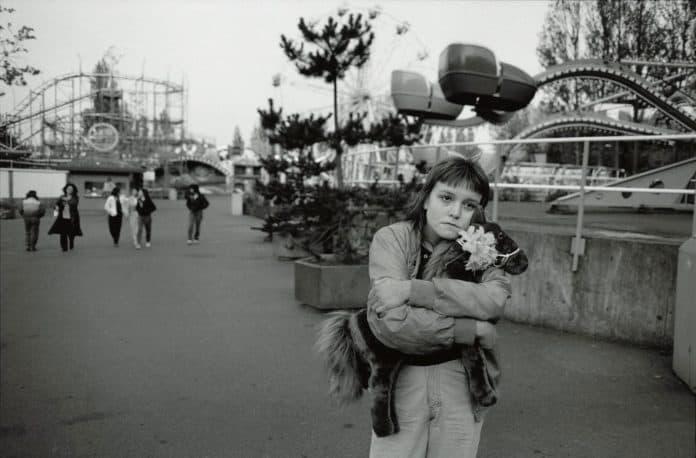
Mary Ellen Mark was an American photographer known for her documentary and portrait work. Her images have appeared in major publications and exhibitions, often focusing on marginalized communities and the human experience.
What can we learn from Mary Ellen Mark?
Mark teaches us that we don’t have to photograph popular subjects to create meaningful work. By focusing on the outcasts of society, she sheds light on unique human experiences.
Mark reminds us that photography doesn’t need to consist of pretty pictures to have depth and significance.
14. Robert Frank

Robert Frank was a Swiss-American photographer and filmmaker, best known for his book The Americans, which captured the complexities of American life in the mid-20th century.
What can we learn from Robert Frank?
Frank’s work teaches us that we can find beauty in the mundane aspects of life. His candid, authentic representations of society remind us to look for stories in everyday moments.
So don’t worry about finding beautiful subjects; there’s beauty all around you.
15. W. Eugene Smith
William Eugene Smith was an influential American photojournalist known for his impactful photo essays covering World War II, pollution in Minamata, Japan, and other significant social issues.
What can we learn from W. Eugene Smith?
Smith emphasizes that the subject is the most critical aspect of photography. His intimate, close-up portraits reveal the depth of human experience and emotion.
To create beautiful portraits, we must focus on the subject and tell their story.
16. Imogen Cunningham

Imogen Cunningham was a pioneering American photographer known for her work in botanical photography, portraits, nudes, and industrial landscapes. She was one of the first professional female photographers in America, and her work remains influential today.
What can we learn from Imogen Cunningham?
Cunningham teaches us the significance of drawing inspiration from various art forms. Her work was influenced by Pictorialism, and she successfully integrated that into her photography.
We can pull inspiration and ideas from other artistic mediums to create unique and compelling photographs.
17. Frans Lanting
Frans Lanting is a Dutch photographer recognized for his stunning nature photography featured in National Geographic. He captures the beauty and wonders of the natural world, emphasizing conservation through his work.
What can we learn from Frans Lanting?
Lanting shows us the power of using photography to promote conversation about environmental issues. His images showcase the beauty of wildlife and landscapes, framing them as crucial narratives for conservation.
18. Diane Arbus
Diane Arbus was an American photographer renowned for her powerful portraits of outsiders and marginalized individuals. Her work often explored themes of identity, difference, and humanity.
What can we learn from Diane Arbus?
Arbus teaches us that photography has the ability to shed light on unique aspects of society. By capturing both ordinary and extraordinary individuals, she invites viewers to reconsider their perceptions of beauty and normalcy.
19. Elliott Erwitt

Elliott Erwitt is an American advertising and documentary photographer known for his candid photographs that often evoke humor and emotion. His portraits include famous personalities and everyday people alike.
What can we learn from Elliott Erwitt?
Erwitt emphasizes the importance of evoking emotion and capturing simplicity in photography. He often captures moments that are spontaneous and genuine, reminding us that sometimes the most powerful images are the simplest.
We don’t need to complicate our photography; capturing life as it is can be incredibly impactful.
20. Paul Strand

Paul Strand was an American photographer who played a pivotal role in establishing photography as a recognized art form. His work spans various genres, but he is especially noted for his street photography.
What can we learn from Paul Strand?
Strand teaches us the importance of experimenting with size and perspective. His street photography often alternates between close and wide shots, creating a dynamic range of visual storytelling.
We should explore different distances and angles in our photography to enhance storytelling.
21. Don McCullin

Don McCullin is a British photojournalist known for his harrowing war photography. His images often depict the struggles and suffering of individuals caught in conflict, providing a poignant reminder of humanity’s resilience.
What can we learn from Don McCullin?
McCullin teaches us the value of capturing difficult moments. As photographers, we have the responsibility to document both joy and sorrow, as these images can create awareness and inspire change.
Ultimately, McCullin reminds us that art isn’t always beautiful; sometimes it’s necessary to capture the harsh realities of life.
22. Margaret Bourke White

Margaret Bourke White was a groundbreaking American photographer recognized for her documentary work. She was the first foreign photographer allowed to capture images of Soviet industry and was among the first female war correspondents.
What can we learn from Margaret Bourke White?
White exemplifies the courage needed to photograph the truth and tell difficult stories. Her work challenges us to step outside our comfort zones to capture compelling narratives.
Finding the courage to capture the truth is critical for impactful photography.
23. David Bailey
David Bailey is an English fashion and portrait photographer regarded as a pioneer of contemporary photography. His iconic portraits include figures such as the Rolling Stones, the Kray Twins, and Kate Moss.
What can we learn from David Bailey?
Bailey is a master of showcasing the true personality and character of his subjects. His simple setups allow the subject’s essence to shine, telling a compelling story through the image.
When taking portraits, aim to reveal the personality of your subject through simplicity and clarity.
24. David LaChapelle

David LaChapelle is an American fine art photographer and director known for his colorful and surreal images. His work often combines elements of fashion, celebrity, and provocative themes.
What can we learn from David LaChapelle?
LaChapelle emphasizes the importance of finding and developing a personal style. His unique approach sets him apart and creates a strong visual identity in his work.
As photographers, we must cultivate our own unique styles to differentiate ourselves in the artistic landscape.
25. Yousuf Karsh

Yousuf Karsh was an Armenian-Canadian portrait photographer celebrated for his iconic portraits of influential figures, including Winston Churchill and Marilyn Monroe.
What can we learn from Yousuf Karsh?
Karsh taught us about the art of posing. By thoughtfully positioning his subjects, he conveyed a range of emotions, making his portraits distinct and powerful.
Consider how posing can alter the mood and narrative of your photographs.
26. Andreas Gursky
Andreas Gursky is a German photographer known for his large-format images that capture modern life. His work often features intricate details and grand scenes, merging art with commercial photography.
What can we learn from Andreas Gursky?
Gursky teaches us the value of experimenting with angles and perspectives. Many of his shots are taken from high vantage points, offering a unique perspective that adds depth to his imagery.
Pushing our creative eye to new heights can dramatically enhance our photography.
27. Robert Mapplethorpe
Robert Mapplethorpe was an American photographer known for his striking black-and-white portraits and exploration of beauty through nudes and still life.
What can we learn from Robert Mapplethorpe?
Mapplethorpe’s work showcases the importance of composition. Each photograph is meticulously crafted, emphasizing the basics of framing and balance.
Don’t overlook the fundamentals of composition; they are essential for creating captivating images.
28. Anne Geddes

Anne Geddes is an Australian photographer renowned for her enchanting images of newborns and children. Her work focuses on capturing the innocence, beauty, and vulnerability of children.
What can we learn from Anne Geddes?
Geddes emphasizes the importance of color and repetition in photography. Her compositions often utilize vibrant colors and themes to frame her subjects beautifully.
By being more aware of color, we can elevate our photography to new heights.
29. Robert Doisneau
Robert Doisneau was a French photographer best known for his candid images of Parisian life. His iconic photograph of a couple kissing on a Parisian street epitomizes the spontaneity of his work.
What can we learn from Robert Doisneau?
Doisneau teaches us the art of capturing life in the moment. His images convey a sense of immediacy and spontaneity, inviting us to be present in our photography.
We can strive to capture life as it unfolds, rather than meticulously staging our photos.
30. Mario Testino

Mario Testino is a Peruvian fashion and portrait photographer, renowned for his vibrant imagery and iconic portraits featured in leading fashion magazines. His work captures the essence of luxury and style.
What can we learn from Mario Testino?
Testino emphasizes the use of bright, vibrant colors to enhance the personality of his subjects. His carefully crafted images showcase how color can elevate fashion photography.
Remember that developing your personal vision is key to success and growth as a photographer.
The 30 Most Famous Photographers: Next Steps
Now you know the 30 most famous photographers – and what we can learn from them.
I urge you to study them carefully. The masters have a lot to teach us, and immersing yourself in the works of photographers like Annie Leibovitz and Frans Lanting will undoubtedly enhance your own photographic skills and artistry.
